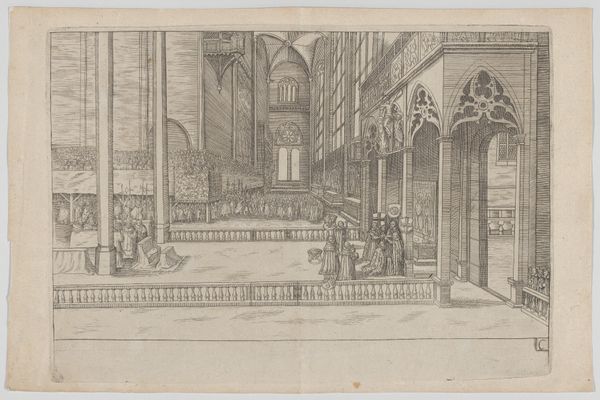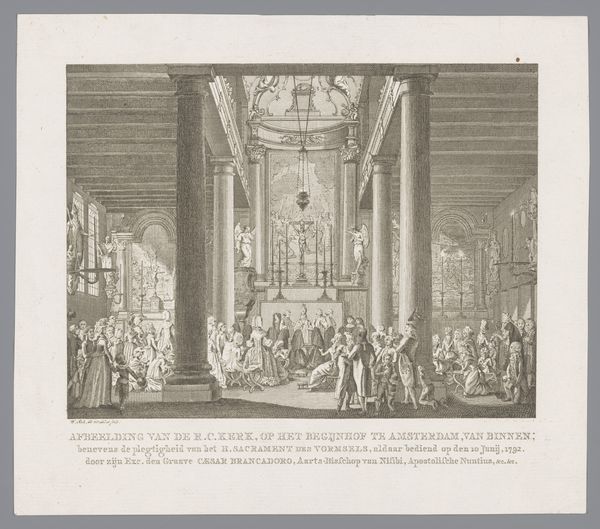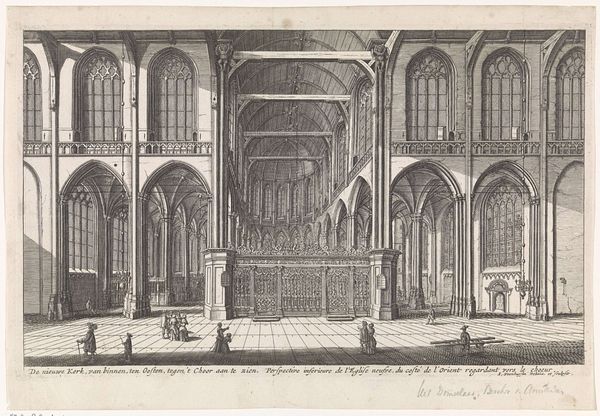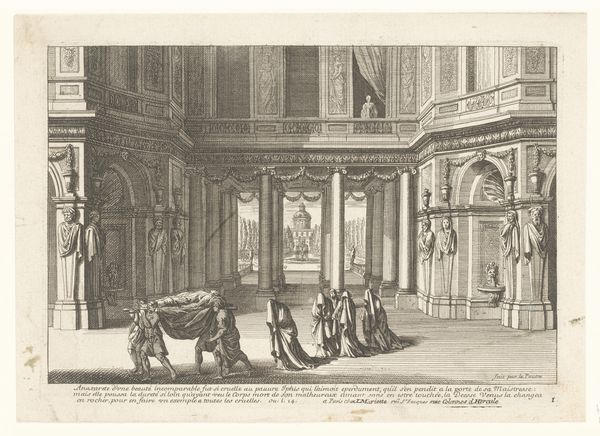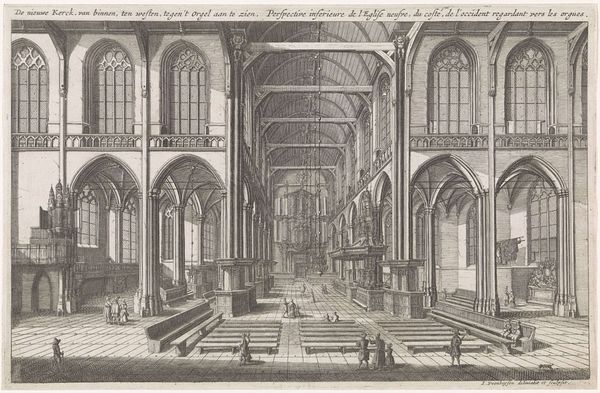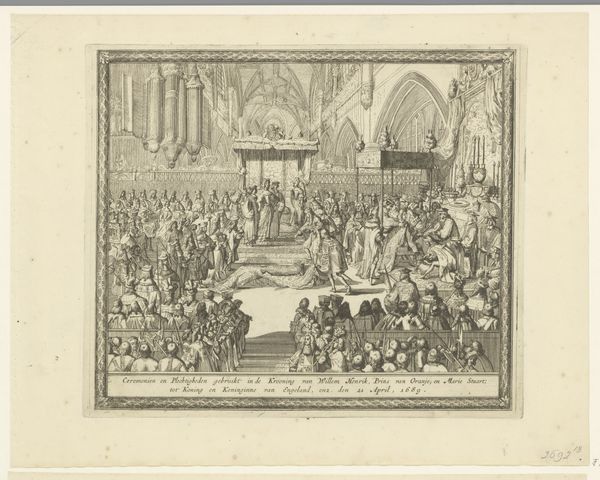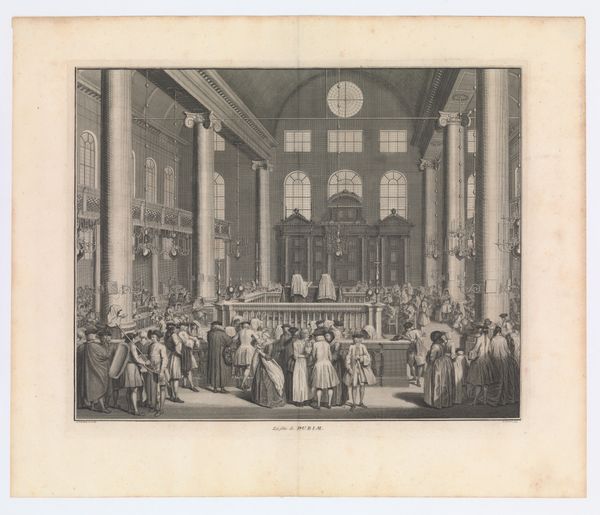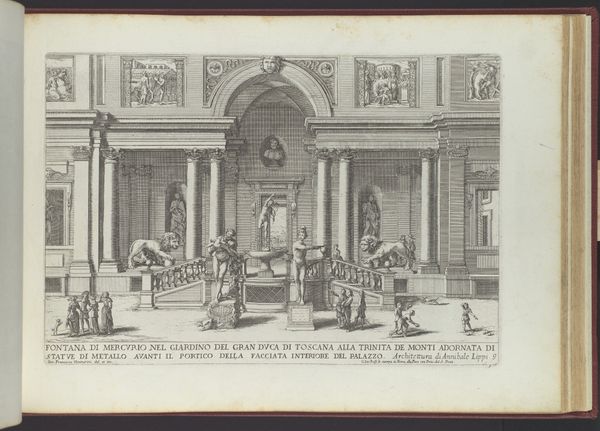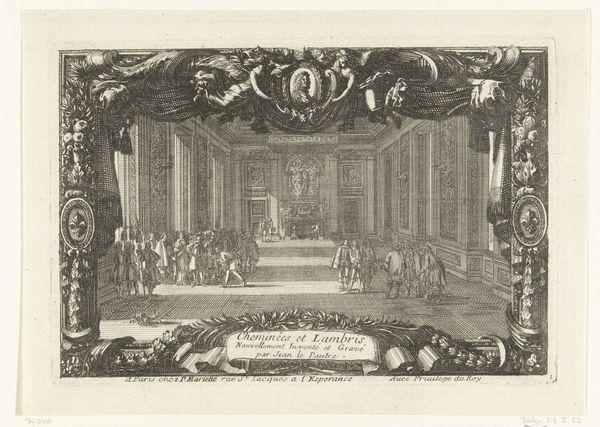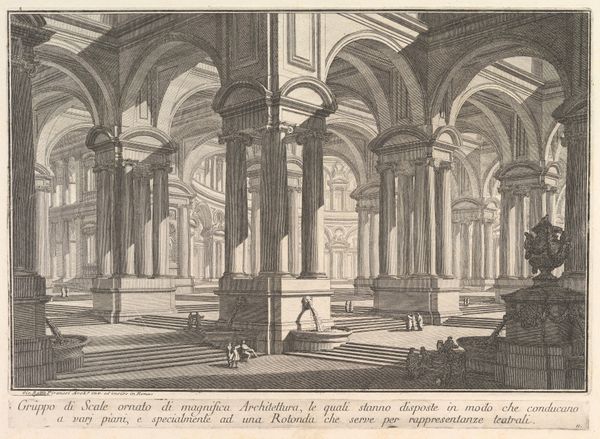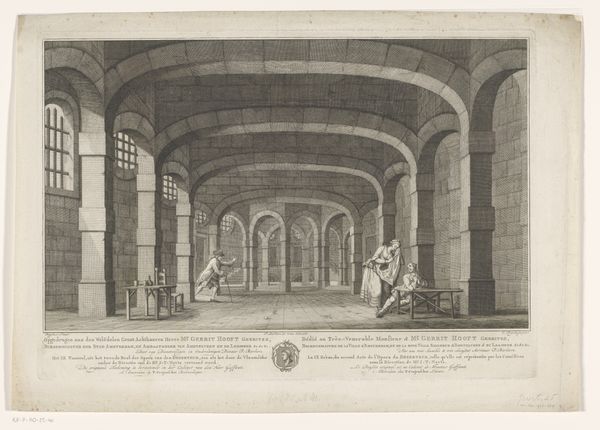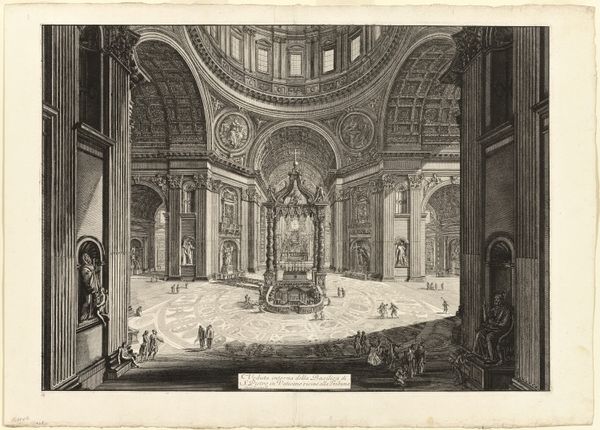
Plate H: Election and Coronation of Emperor Maximilian II 1612
0:00
0:00
drawing, print, engraving, architecture
#
drawing
#
medieval
#
narrative-art
# print
#
form
#
line
#
history-painting
#
engraving
#
architecture
Dimensions: Sheet: 7 3/8 × 11 3/8 in. (18.8 × 28.9 cm) Plate: 6 7/8 × 9 13/16 in. (17.5 × 25 cm)
Copyright: Public Domain
Editor: So, this is "Plate H: Election and Coronation of Emperor Maximilian II," a 1612 engraving. The scene feels so formal and staged, almost like a theatre production. What do you see in this work? Curator: It's a fascinating document of power, isn’t it? We need to consider it as more than just a historical record; it’s a carefully constructed image meant to convey specific messages about legitimacy and divine right. Look at the architectural space – the overwhelming scale of the building emphasizes the Emperor’s authority, framing him as almost superhuman. Do you notice how the artist used line work? Editor: I see it, yeah! It’s so detailed. The lines create depth, especially in the architecture, but they also feel really precise and controlled. Was this meant for a wide audience? Curator: Precisely. Prints like this one served a crucial function in disseminating images and ideals of power. Consider how this image reinforces existing power structures through visual rhetoric. The Emperor is not just a ruler but divinely appointed; it is his *right* to rule. What is subtly reinforced is how commoners did not belong in that elevated circle, that is the message in this artwork. Editor: It's interesting to think about it not just as a neutral depiction of an event but as active propaganda! The artist chose what to include and exclude, right? Curator: Absolutely. And consider the 'anonymous' attribution. Perhaps the artist’s individual identity was less important than the message the print conveyed. The anonymity itself reinforces that it's less about an individual’s perspective and more about establishing power. Is this propaganda or is it history? Editor: That framing gives me a completely new perspective. It's making me rethink what I considered a record of history into a form of narrative control. Curator: Exactly. By examining visual culture within its socio-political context, we see art functioning as a crucial actor in shaping identities, power dynamics, and cultural memory. It is much more than just looking at something old.
Comments
No comments
Be the first to comment and join the conversation on the ultimate creative platform.
